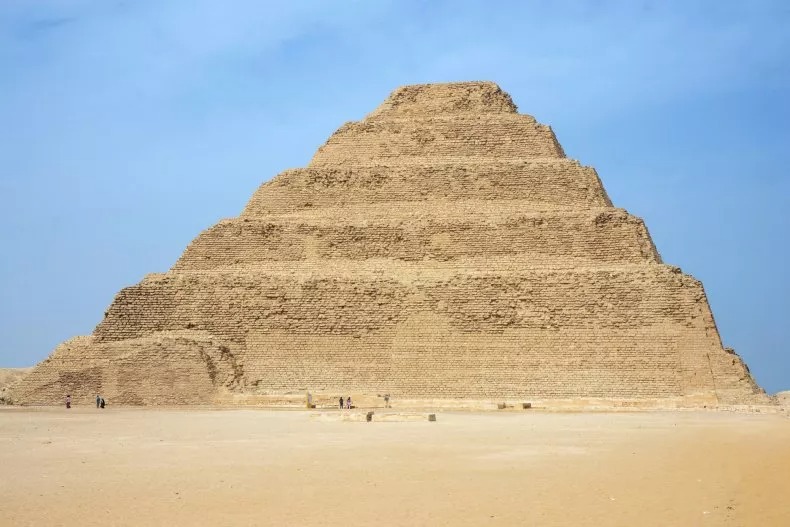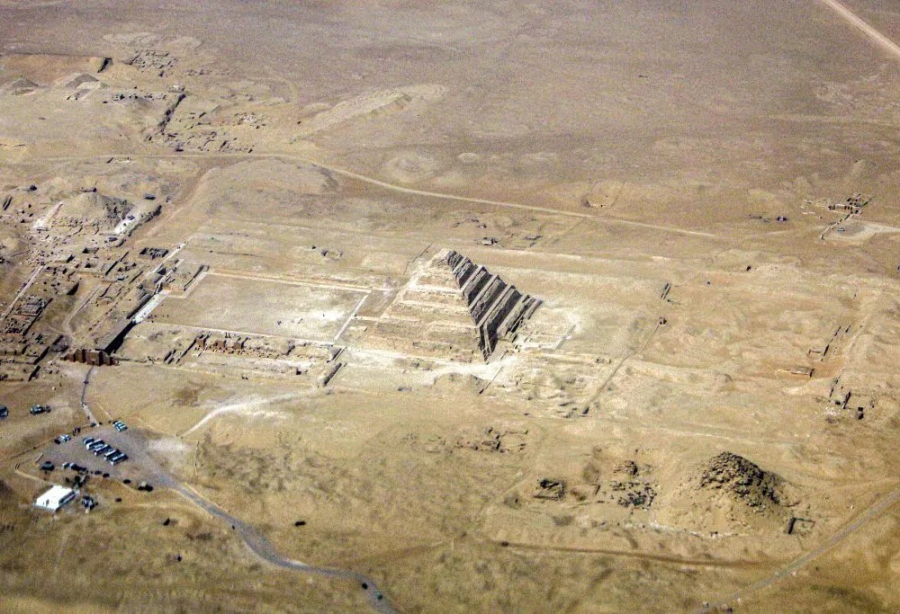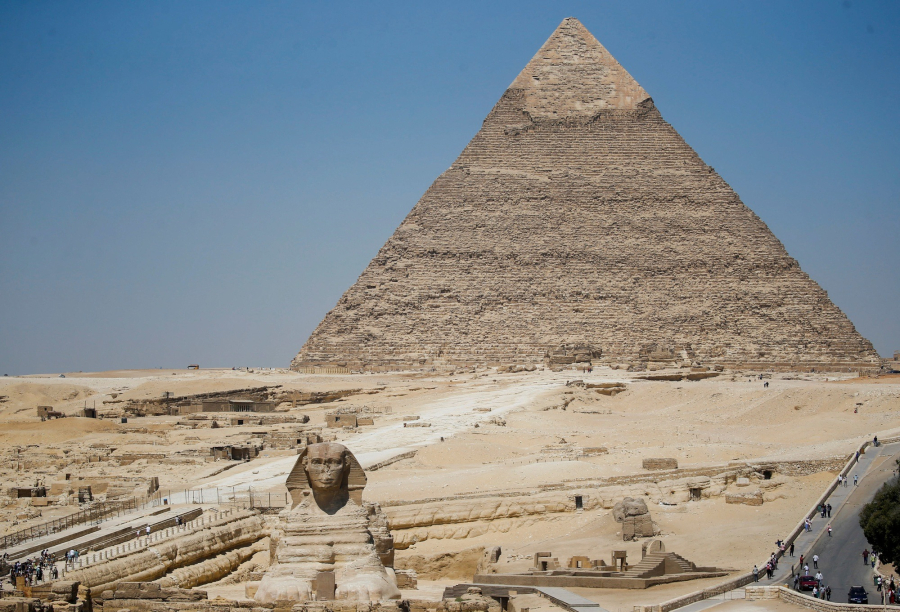According to Newsweek, researchers may have uncovered a potential explanation for how the construction of the iconic Djoser Pyramid was carried out. Believed to be the oldest structure in ancient Egypt, the pyramid might have been built using a sophisticated hydraulic lifting system, as reported in the journal PLOS ONE.
Located in the Saqqara necropolis on the limestone plateau of the Nile River’s west bank, the Djoser Step Pyramid complex is thought to have utilized a system of water flowing through two internal shafts, lifting large stone blocks during construction. “This discovery answers a question that has remained a mystery for centuries concerning the method of construction of the pyramids,” said Xavier Landreau, the study’s lead author from the Institute of Ancient Technologies (CEA) in France, in an interview with Newsweek.

The Djoser Pyramid, dated to around 4,700 years ago, is pictured here. (Image: Newsweek)
Dating back approximately 4,700 years, the Djoser Pyramid served not only as a funerary complex for Pharaoh Djoser but also as a precursor to later pyramids, such as the Cheops Pyramid. It was the first structure to showcase two important innovations: the pyramidal shape and the use of monolithic blocks.
Standing at over 60 meters tall, the tallest man-made structure in the world at the time, the exact construction methods had long been a mystery. However, this new research sheds light on the process. Significantly, the findings indicate that the Step Pyramid of Djoser was built over a basin, which provided an abundant water supply.

The Step Pyramid rises over 200 feet and is made from stones weighing more than 650 pounds each. (Image: Newsweek)
The study also suggests that the area surrounding Gisr el-Mudir, a massive structure near the pyramid, may have served as a “check dam” to retain sediment and water. With a length of nearly 2 kilometers and a thickness of 15 meters, this structure could regulate and filter water while protecting the Saqqara plateau from flooding.
To the south of the complex, a deep structure known as the “Deep Trench,” measuring about 400 meters long and 27 meters deep, is believed to have been a water treatment plant. By comparing hydrological analyses with archaeological findings, the researchers propose that the Deep Trench and Gisr el-Mudir formed a sophisticated hydraulic system that regulated water flow and enhanced water purity.
Additionally, the Djoser Pyramid may have utilized an unrecorded hydraulic elevator system to lift stones from the ground. “We demonstrate that pure water from the treatment plant could be conveyed into pipes under the pyramid and used to lift the blocks,” Landreau explained.

This system not only reduced the workload for laborers but also facilitated a more natural and efficient method of pyramid construction. “It’s similar to our modern cranes and provided a logistical advantage,” Landreau added.
While the new findings present a promising research direction, further studies are needed to confirm the hydraulic lifting hypothesis. Future research will involve investigating how the hydraulic system functioned and assessing the water supply available at the time. It remains unknown if other ancient Egyptian pyramids employed similar hydraulic mechanisms, but this possibility exists.



































